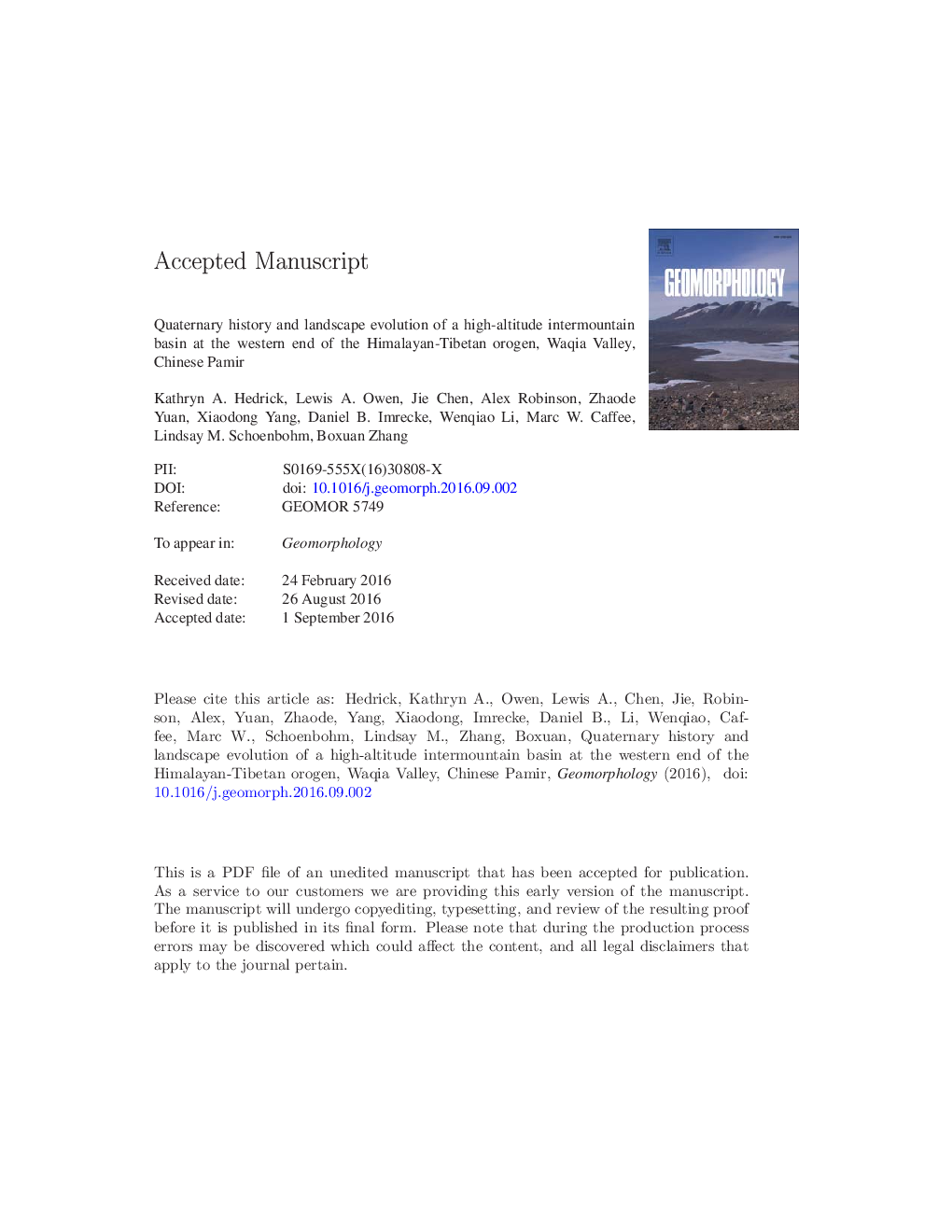| کد مقاله | کد نشریه | سال انتشار | مقاله انگلیسی | نسخه تمام متن |
|---|---|---|---|---|
| 5781104 | 1635365 | 2017 | 63 صفحه PDF | دانلود رایگان |
عنوان انگلیسی مقاله ISI
Quaternary history and landscape evolution of a high-altitude intermountain basin at the western end of the Himalayan-Tibetan orogen, Waqia Valley, Chinese Pamir
ترجمه فارسی عنوان
تاریخچه کواترنر و تکامل چشم انداز یک حوضه بین کوهستانی ارتفاع بالا در انتهای غربی ارتفاعات هیمالیا-تبت، دره واقیا، چینی پامیر
دانلود مقاله + سفارش ترجمه
دانلود مقاله ISI انگلیسی
رایگان برای ایرانیان
کلمات کلیدی
موضوعات مرتبط
مهندسی و علوم پایه
علوم زمین و سیارات
فرآیندهای سطح زمین
چکیده انگلیسی
Quaternary valley fills and landforms in the Waqia valley of the Chinese Pamir were examined using geomorphic mapping, geomorphic and sedimentological analysis of landforms and sediments, and cosmogenic 10Be surface exposure dating. Six sets of moraines (M-1 to M-6) are identified and date to the penultimate or an older glacial cycle (M-1), penultimate glacial cycle (M-2), early last glacial and probably Marine Oxygen Isotope Stage (MIS) 4 (M-3), MIS 2 (M-4), Late Glacial (M-5), and early Holocene (M-6). Younger moraines are also present, but these were not examined in detail. Alluvial fans and outwash/river terraces are present throughout the valley. Four surfaces on alluvial fans and river terraces were dated to ~Â 580Â ka (T-1), ~Â 120Â ka (T-2), ~Â 100Â ka (T-3), and ~Â 70Â ka (T-4). Large landslide and lacustrine deposits are common within the valley fills and represent periods of major slope instability and possible damming of drainages. Glacial processes dominate the western side of the valley; landsliding is the leading process on its eastern side. Defining the nature and timing of landform formation in this valley highlights the punctuated nature of landform evolution in the Himalaya and Tibet and provides a framework for considering the abundant valley fill successions elsewhere in the orogen.
ناشر
Database: Elsevier - ScienceDirect (ساینس دایرکت)
Journal: Geomorphology - Volume 284, 1 May 2017, Pages 156-174
Journal: Geomorphology - Volume 284, 1 May 2017, Pages 156-174
نویسندگان
Kathryn A. Hedrick, Lewis A. Owen, Jie Chen, Alex Robinson, Zhaode Yuan, Xiaodong Yang, Daniel B. Imrecke, Wenqiao Li, Marc W. Caffee, Lindsay M. Schoenbohm, Boxuan Zhang,
